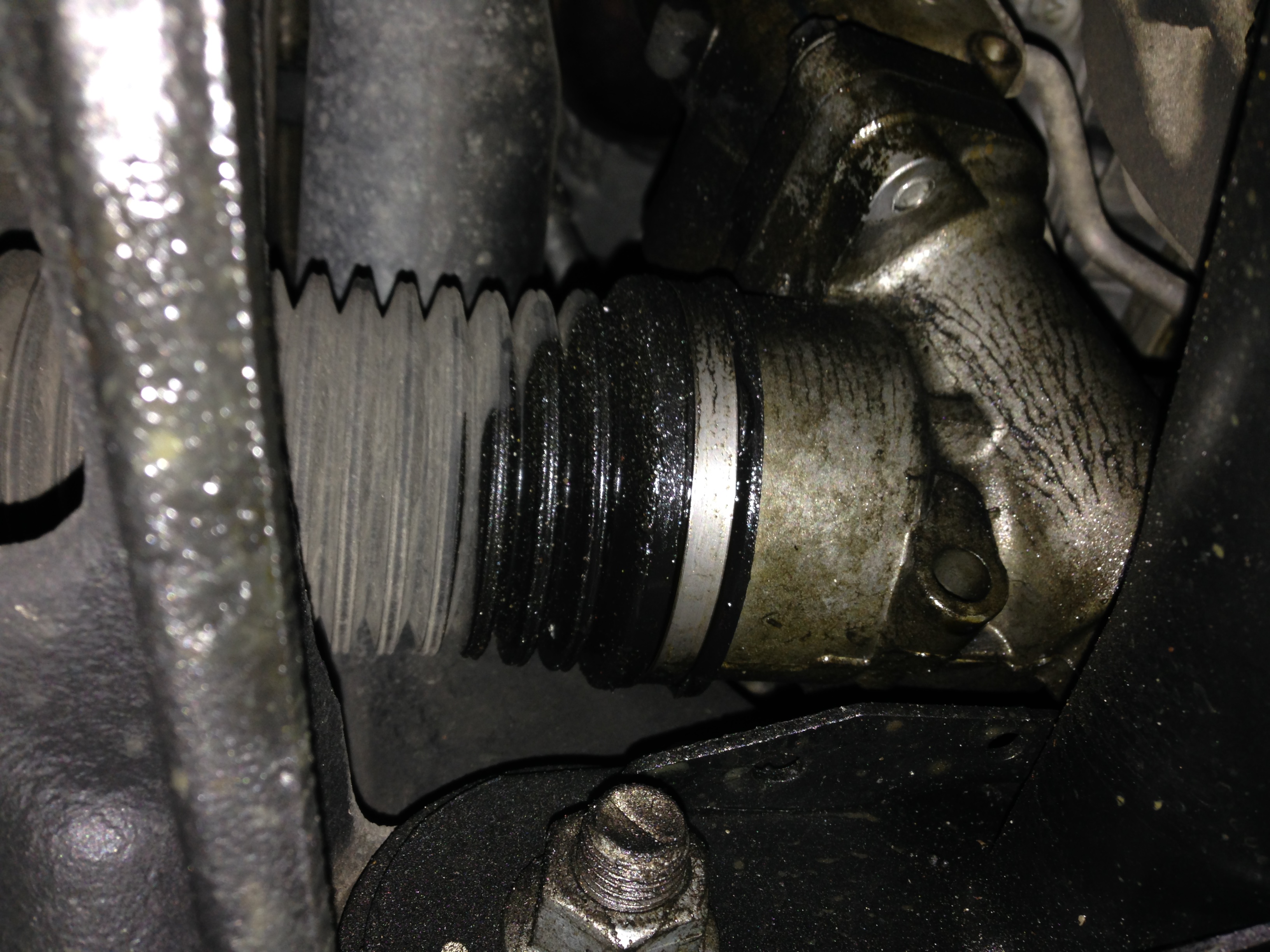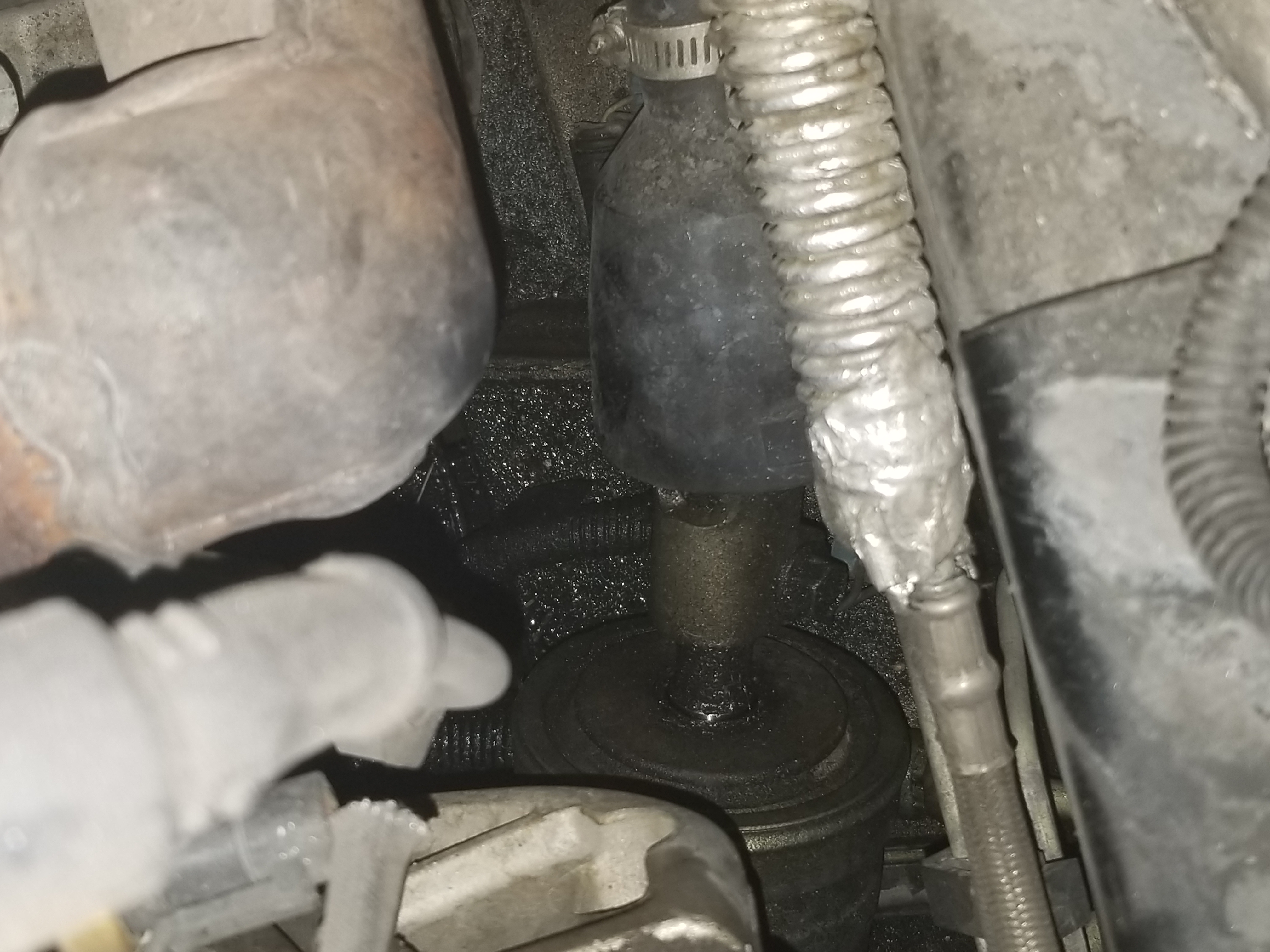Introduction
Are you tired of that annoying power steering fluid leak that’s been plaguing your car? The good news is, fixing a power steering rack leak isn’t as daunting a task as you might think. With the right tools and a bit of automotive know-how, you can tackle this issue head-on and restore your car’s smooth handling experience. In this comprehensive guide, we’ll delve into the causes, symptoms, and step-by-step instructions on how to fix a power steering rack leak. Whether you’re a seasoned mechanic or a DIY novice, we’ve got you covered.

Image: mbworld.org
Understanding the Power Steering Rack
The power steering rack is a vital component of your car’s steering system, transforming your steering wheel’s rotational motion into the side-to-side movement of your front wheels. It consists of a rack with gear teeth meshing with a pinion gear connected to the steering column. As you turn the steering wheel, pressurized power steering fluid flows through the rack, moving the gear teeth and causing the wheels to turn. A power steering leak in the rack can compromise the pressure integrity of the system, affecting your steering’s responsiveness and stability.
Identifying a Power Steering Rack Leak
Spotting a power steering rack leak is often not a matter of if, but when. Here are some telltale signs that you might have a leak on your hands:
-
Low Power Steering Fluid Level: Regularly check your power steering fluid reservoir. A consistently low fluid level, especially after a top-up, could indicate a leak.
-
Visible Leaks: Inspect underneath your car for any drips or fluid leakage around the power steering rack area. Park over a clean surface or a piece of cardboard to make it easier to spot.
-
Squealing or Whining Noises: If your power steering pump starts making unusual noises, such as squealing or whining, especially when turning the steering wheel, it may be due to low fluid levels caused by a leak.
-
Stiff or Heavy Steering: A power steering leak can lead to reduced fluid pressure, making your steering feel stiff or heavy, especially at low speeds or when parking.
Causes of a Power Steering Rack Leak
Now that you know how to identify a leak, let’s explore the possible causes:
-
Damaged Seals: Over time, the seals within the power steering rack can wear out or become damaged, allowing fluid to escape.
-
Improper Installation: If the power steering rack was recently replaced or serviced, a leak could result from improper installation or tightening of the components.
-
Corrosion: In areas with harsh road conditions or exposure to salt and moisture, corrosion can weaken the power steering rack and cause leaks.
-
Accidental Damage: Road hazards, such as potholes or debris, can impact your car’s undercarriage, potentially damaging the power steering rack.

Image: www.corvetteforum.com
Step-by-Step Guide to Fix a Power Steering Rack Leak
If you’re ready to tackle the leak yourself, here’s a detailed guide to help you through the process:
1. Gather Tools and Materials:
- New power steering rack
- Power steering fluid
- Fluid filter (if applicable)
- Wrench set
- Socket set
- Jack and jack stands
- Safety glasses
- Gloves
2. Safety First:
- Park your car on a level surface and set the parking brake.
- Allow the engine to cool completely.
- Disconnect the negative battery terminal.
3. Fluid Drainage and Removal:
- Locate the power steering fluid reservoir and suck out most of the fluid using a turkey baster or a pump.
- Place a drip pan under the power steering rack and disconnect the return line.
- Turn the steering wheel all the way to the left and right, allowing the remaining fluid to drain into the pan.
4. Component Removal:
- Support the front of the vehicle with jack stands.
- Remove the wheels and any necessary underbody covers.
- Disconnect the tie rods from the steering rack using a wrench.
- Remove the bolts securing the power steering rack to the subframe.
- Carefully lower the power steering rack and disconnect the fluid lines.
5. Install the New Rack:
- Clean the seating surface where the new rack will be installed.
- Transfer any necessary components from the old rack to the new one.
- Lift the new rack into place and connect the fluid lines.
- Secure the rack to the subframe using the bolts.
- Reattach the tie rods.
6. Fluid Filling and Bleeding:
- Fill the power steering fluid reservoir with fresh fluid.
- Slowly turn the steering wheel back and forth, ensuring the fluid circulates and removes any trapped air.
- Repeat the fluid filling and bleeding process until there are no more air bubbles.
7. Final Checks:
- Double-check all connections and bolts for tightness.
- Reinstall the underbody covers and wheels.
- Reconnect the battery and start the engine.
- Check for any leaks and ensure the power steering system operates smoothly.
How To Fix Power Steering Rack Leak
https://youtube.com/watch?v=ujXV0S_xmtw
Conclusion
Fixing a power steering rack leak is not an impossible task, especially if you’re well-equipped with the right tools and knowledge. By following the detailed steps outlined in this guide, you can restore your car’s steering system to its optimal condition. Remember, addressing a power steering leak promptly is crucial to prevent further damage and ensure your driving safety. If you’re still unsure about tackling the repair yourself, it’s advisable to consult a qualified mechanic to handle the job professionally.